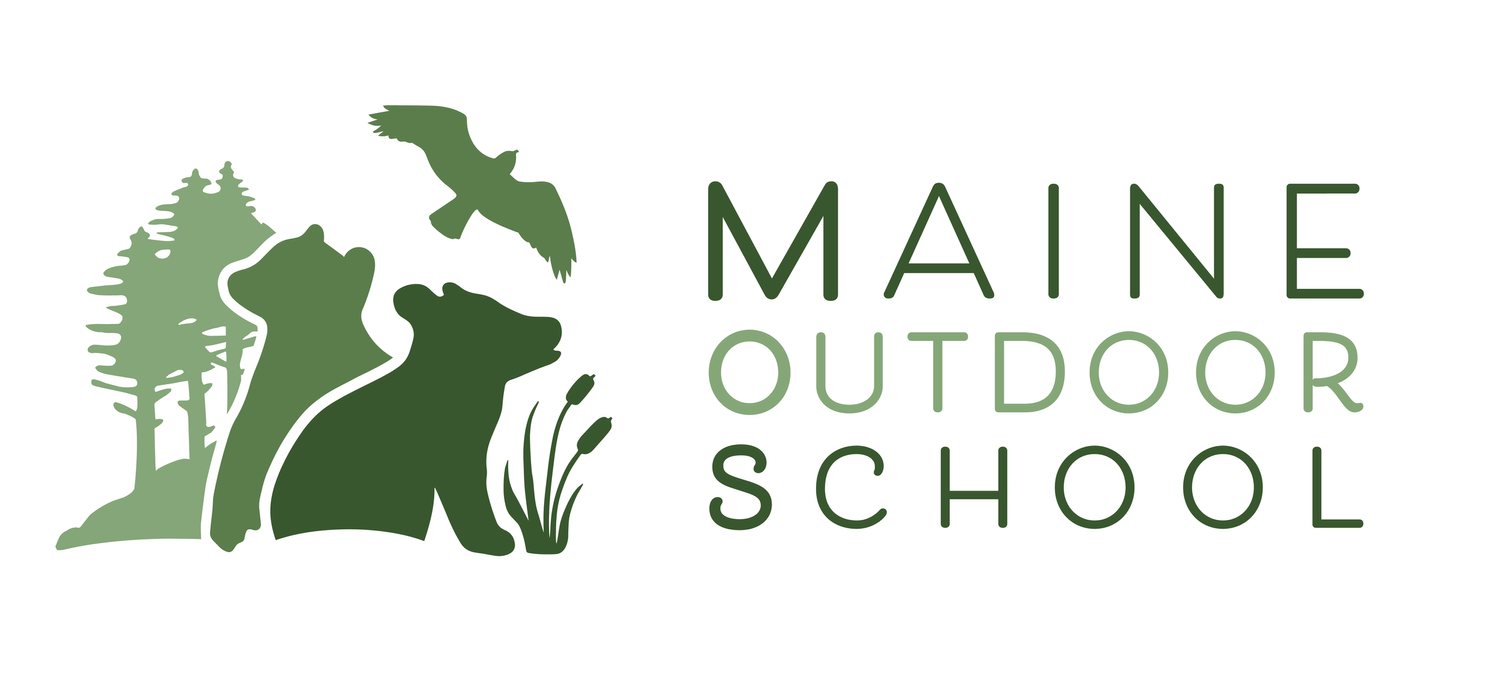The Outdoor Insider
Maine Outdoor School's Quarterly E-Newsletter
OWL Outing participants on the Narraguagus River.
The Outdoor Insider Archive
- January 2025
- October 2024
- August 2024
- May 2024
- January 2024
- October 2023
- July 2023
- April 2023
- January 2023
- October 2022
- July 2022
- April 2022
- January 2022
- October 2021
- July 2021
- April 2021
- January 2021
- October 2020
- July 2020
- April 2020
- January 2020
- October 2019
- July 2019
- April 2019
- January 2019
- October 2018
Issue #32
October 2024
"MOS had such a positive impact on our summer school students! They were engaged and couldn't wait for our sessions."- Blue Hill Consolidated School Summer School teacher, August 2024
Tracks:
How did MOS leave its mark this quarter?
Watershed Camp participant excited to use tools to complete trail maintenance work
Beech Hill Pond Lake Association Community Event
A few of the Summit for a Cause hikers
Jesup Memorial Library plant program
Finished our 2024 summer school program series in all five RSU 24 schools plus Cherryfield, Ellsworth, Trenton, and Blue Hill.
Led an OWL-Outdoor Women Lead outing paddling the Narraguagus River.
Hiked Katahdin with our Summit for a Cause participants who raised funds for Incredible Edible Milbridge.
Taught an orienteering program for local homeschoolers.
Enjoyed our first year of Watershed Camp with Maine Coast Heritage Trust.
Completed our summer Riverside Family Scientists programs with Frenchman Bay Conservancy and Ellsworth Public Library learning about plants, pollinators, and nature art.
Held our Discover Plants program at Jesup Memorial Library.
Led a family-friendly watershed-focused program for Beech Hill Pond Lake Association.
Guided private hikes and paddling experiences for families visiting the area.
Started school programming at 8 public schools with lots more on the calendar.
Check out the “MOS in the News” page to see where we’ve shown up in the press!
Community Commendations:
Watershed Camp 2024
This quarter’s community commendation goes to Maine Coast Heritage Trust (MCHT), which has helped conserve over 180,000 acres, 337 islands, and over 100 miles of hiking trails. This was our first year collaborating with MCHT to host Watershed Camp, a week-long day camp held within the Orange River watershed in Whiting this August. Campers learned about watershed health and the importance of conservation through hiking, science projects, nature observation, and canoeing. Thanks especially to Cathy Lookabaugh who co-led this camp with Hazel this year!
“Watershed Camp was a week where landscapes were not just observed but understood, where nature became a classroom, and where young people discovered their role as stewards. Through their journey along the Orange River, they found that the heart of a landscape lies in the connection between all its parts—and in the hands of those who care for it.” Read the rest of the article here.
Biomimicry:
While blue-bead lily berries are indeed blue berries, they’re not blueberries, and should not be eaten. However, other parts of this plant have been used in many ways. The young leaves in early spring can be eaten raw or cooked. Many indigenous tribes have historically used a poultice of these leaves to treat various skin wounds, like burns or infections. The Algonquin people applied the crushed leaves to the skin as a mosquito repellant. The Iroquois made a compound decoction out of the whole plants to treat diabetes. And Chippewa children often would bite patterns into the leaves for fun.
There are so many ways we can learn from nature to make our lives better! But as always, make sure you consult many reliable resources and are harvesting with care for the species, its habitat, and others who need it, if you choose to harvest.
This edition of Biomimicry is an adaptation of an episode of The Nature of Phenology, a radio show that MOS Co-Founders Hazel and Joe produced weekly for WERU-FM from 2018-2024. You can read or listen to entire past episodes here.
Resilience Tip:
According to the CDC, regularly scheduled recess time for physical activity and play helps students stay on-task, reduces disruptive behavior in the classroom, and improves their social and emotional development. Learn more here.
What's Upstream:
Join our upcoming OWL Outings: Finding fungi at Catherine Hill in Franklin, discovering unique organisms at Ingersoll Point in Addison, and learning tips on winter plant identification at Boot Head Preserve in Lubec.
Not as motivated to get outside now that it is getting cooler? Schedule your own private guided experience! We can show you something new on even your most visited trails.
We have an additional Outdoor School Naturalist Educator joining our team next week! We can't wait to introduce him to you. More soon!








